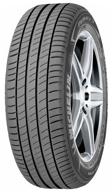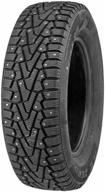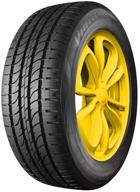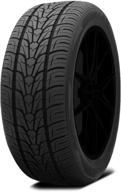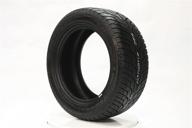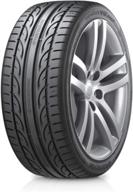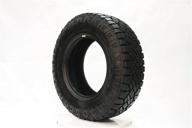
Review on 🔧 EEZTire-TPMS4: Premium Real-Time Tire Pressure Monitoring System with 4 Anti-Theft Sensors and 3-Year Warranty by Russell Smith

Works great for me. I have some tips that might help.
I see completely different reviews on this product. Some give 1 start and some give 5. I've been using the system on my GMC 350 since April 2018 and haven't had any issues. I decided to comment on some of the reviews I saw. I think I know what's causing your problems. A guy shows a photo of a blown tire and its pressure readings. This is unlikely. The system will alarm within seconds if the sensor is removed (ie zero barometric pressure). It's easy to test. Unscrew the sensor and you'll instantly get a beep with a flashing tire indicating which tire it thinks is flat. Most likely his sensors were mixed up. One of them probably reads zero. Just not the one he thought was on that hoop. I suspect that at some point the sensors were swapped and installed on different tires. The screw sensor must be removed each time air is added. It is very easy to confuse them. They ask people to label them, but most likely they don't, or the labels fell off because they didn't cover them with clear nail polish as the manual suggested. I think many problems are related to ignorance or an inability to be effective when programming a system. Programming is very easy if you follow the instructions. There are a number of people who have great videos that go through this step by step. I think the key is to program the sensors on the kitchen counter first. Then take her to the car. It's easier than crawling around trying to get to each hoop and code it before the system crashes. If the system expires, the work will not be saved and you will have to start over. I think that's the root of the problem for people complaining about having to program sensors over and over again. The next common problem I see is people complaining about the sensors failing while driving. RF interference is causing problems. Having wireless cameras, working refrigerators, and other devices that can create radio frequency interference around your vehicle can cause problems. This problem can be solved with a repeater. The repeater should be closer to the receiver than to the buses. Don't put a repeater behind the fifth wheel and expect it to broadcast all the way to the tow vehicle. They recommend mounting the repeater in the front compartment of the fifth wheel closest to the truck. Not in the back, not in the middle. Metal can also give him problems. The transmitter should be placed where there is the least amount of metal between it and the busbars/receivers. I've seen people complain about pressure readings. The guys at EEZ RV have a video that talks about the valve stem and how the sensor has to be able to push it in to let air out in order for the sensor to get a reading. In some cases these push pins are too deep and when screwing the sensor on they don't push through at all or push through far enough to release enough air for reading. I bet that's a problem for those who complain about it. This makes them think the batteries aren't working and get frustrated when changing the batteries doesn't solve the problem. All you need is a valve stem tool. Unscrew it a bit or replace it with another. A simple test would be to screw in a sensor that you think is having trouble on the bike or whatever. If it's getting readings from a different valve stem, then that's most likely the problem. The only thing I don't like is that I have to unscrew the low-profile sensor every time I need to add air to the dual tires. They are very difficult to reach and unscrew. I can't insert them fast enough to minimize air loss. The trick to getting good readings is to over-inflate the tire and reseat the sensor. Let the system get good readings that will be high. Then unscrew the sensor slightly to release some air. Screw it back up and read it again. Switching from high to low gives you the ideal cold pressure setting. Most fill up to the exact cold pressure while seated, and then when they screw the sensors onto the tires, the pressure drops below the optimal level. Although I'm a little fed up. I just ordered flow sensors for my dual wheels. I think it will be easier to pump air into them. With front tires or with valve stems out, it's easy. Speaking of tire pressure readings, gauges are different. Temperature is of great importance to get true readings. Most pressure gauges are not temperature calibrated. For this reason, the readings of the EEZ gauge can deviate from the readings of the tire pressure gauge. One guy mentioned that he calibrated a race sensor, but that doesn't mean he has temperature compensation. I have a Steelman 9797 sensor (https://www.amazon.com/gp/product/B004IQ9I6O/ref=oh_aui_search_asin_title?ie=UTF8&psc=1) which is temperature and pressure calibrated. It agrees exactly with the AWZ readings. The item cost $140. The only way to perfectly verify the reading between the EEZ and the tire pressure gauge is to use a properly calibrated gauge that takes ambient pressure and temperature into account. Another thing to note is that I'm not thrilled with its anti-theft coating. There's a lot of talk about it here. I agree with them. I took them off. I could leave them on the front tires but I don't think stealing them is really that hot. If anyone ever gets caught I might reconsider, but so far I haven't heard of anyone actually stealing a tire sensor. They only work with the system for which they were purchased. Each manufacturer has a different frequency and encryption. I had no problems with my GMC 350. I drove it over 22,000 km with the same batteries and sensors. Keep in mind that this system isn't just plug and play. It works great if you take your time and plan the installation. The number one tip is to program it in the house with every sensor on the table. Before installing sensors on a vehicle, test it and understand how it works. Problems are more difficult to fix after the system is installed.
- Good product for the price
- Weight


